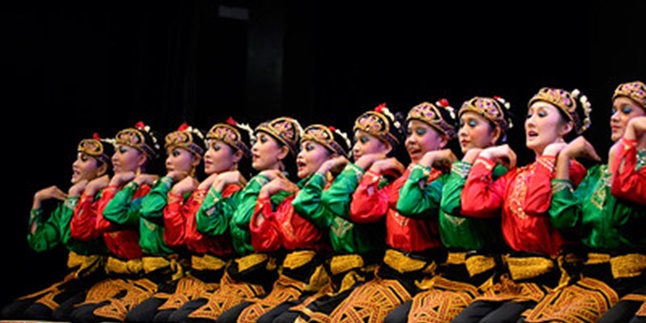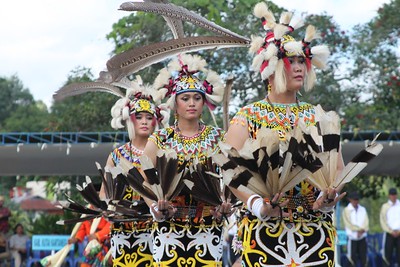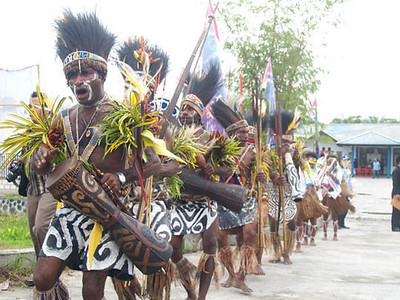Commitment is a Relationship of Attachment to Something, Find Out Examples in Everyday Life
Commitment is very important. Because, the presence of commitment will affect a person's consistency in taking action. Find a deeper explanation here.

Kapanlagi.com - Traditional Indonesian dance art always captivates foreign countries. Fortunately, from generation to generation, new dancers continue to emerge, keeping the art of dance alive. However, traditional dance cannot be learned just like that. There are many things to consider. Floor patterns are one of them.
Floor patterns are one part of the elements in the art of dance. Therefore, the existence of floor patterns is very important, especially in traditional group dances. Floor patterns will make the dancers look cohesive and organized. With that, the performed dance will also appear more beautiful and harmonious.
To learn more about what floor patterns are, read the following summary compiled from various sources.

Understanding floor patterns (credit: flickr)
Floor patterns are references that show the composition and layout of dancers when performing group dances. In addition, floor patterns also serve as a guide for dancers' movements while transitioning during the dance. This allows dancers' movements to appear more organized and avoid mistakes and accidents such as collisions or stepping on other dancers' feet.
Each type of dance also has different floor patterns depending on the movements and number of dancers. This adds to the diversity in traditional dance art in the homeland. Some types of floor patterns in dance include horizontal, vertical, diagonal, and curved patterns.

The function of floor patterns in dance (credit: flickr)
As mentioned earlier, floor patterns are an important and necessary part of dance. Floor patterns not only make the arrangement of dancers on stage look neat, but they also serve several functions for the dancers. The functions of floor patterns are as follows.
1. Making the Dance Look Compact
The presence of floor patterns on the dance stage makes the dancers appear more compact. This is because floor patterns determine the layout or position of the dancers. As a result, the dancers look more organized and neat.
2. Facilitating Dancers' Movements
The floor pattern of a dance is adjusted according to the movements and number of dancers involved. This is because floor patterns help facilitate dancers in performing various dance movements, especially movements that involve changing positions.
3. Avoiding Mistakes
Related to the previous function, floor patterns make it easier for dancers to move their bodies while transitioning. The predetermined distance in the dance pattern minimizes the occurrence of mistakes and accidents, such as collisions.
4. Adding Beauty and Unique Characteristics to the Dance
Each type of dance has different floor patterns. This adds to the beauty, uniqueness, and distinctiveness of each dance.

Various floor patterns (credit: flickr)
As mentioned earlier, there are various floor patterns in the art of dance.Floor patterns play a very important role in arranging the position and movements of the dancers.Therefore, it is important to recognize each of the various floor patterns.Some examples of floor patterns are as follows.
1.Vertical Floor Pattern
Vertical floor pattern is a floor pattern in dance that requires the dancers to line up straight from front to back.This floor pattern symbolizes the deep connection between humans and the Creator God.Vertical floor pattern is commonly found in classical dances. Examples of dances with vertical floor patterns are Yospan dance from Papua, Pasambahan dance from West Sumatra, and Baris Cengkedan dance from Bali.
2.Horizontal Floor Pattern
Another type of floor pattern is the horizontal floor pattern.As the name suggests, this floor pattern requires the dancers to line up horizontally from left to right.Horizontal floor pattern embodies the philosophy that humans have a connection with each other.Some examples of dances with horizontal floor patterns are Saman dance from Aceh or Indang dance from West Sumatra.
3.Curved Floor Pattern
The third floor pattern is the curved pattern.Curved floor pattern can be applied in various forms, such as circular lines, figure eight shape, U shape, or even snake-like curves. Curved floor patterns will enhance the beauty of dance performances. Some traditional dances that apply curved floor patterns include the Piring dance from West Sumatra, the Randai dance from West Sumatra, and the Ma'badong Toraja dance from North Sulawesi.
4. Diagonal Floor Patterns
The fourth type of floor pattern in dance is the diagonal floor pattern. To apply this floor pattern, dancers will create a line from the right corner to the left or vice versa (forming a diagonal line). Similar to curved patterns, diagonal floor patterns will also add a beautiful and strong impression to the dance. Some types of traditional dances that apply this pattern include the Sekapur Sirih dance from Jambi, the Pendet dance from Bali, and the Gending Sriwijaya dance from South Sumatra.
Those are some explanations about the definition of floor patterns as an important element in dance, along with their functions and types. Hopefully, it is useful and can increase knowledge.
(kpl/psp)
Cobain For You Page (FYP) Yang kamu suka ada di sini,
lihat isinya
Commitment is very important. Because, the presence of commitment will affect a person's consistency in taking action. Find a deeper explanation here.
Mumps is a health disorder that occurs due to inflammation caused by a viral infection. It attacks the parotid glands that produce saliva. Here are the causes of mumps and the risk factors for transmission.
These are 80 good and funny WhatsApp group names, suitable for fun group chats. What are those names? Let's check them out, KLovers.
You also need to know that there are types of interviews that are adjusted to each individual's needs. To make it clearer, here is a more complete explanation of the types of interviews that you need to know.
Empathy is something that can be learned and deepened. Therefore, read the following discussion about empathy.
The cause of epilepsy can occur due to various triggering risk factors characterized by seizures and even loss of consciousness.
Analysis is a very important aspect of research. That's because analysis is the process of data decomposition and analysis. Read the complete explanation here.
Toothache often becomes a complaint that many people often experience. This condition is usually experienced when consuming sweet, cold, or hot food. These are the causes of toothache that should not be ignored.
Persian cats are one of the most idolized cat breeds. For those of you who want to decide to have a Persian cat as a pet, it is good for you to first know the types of Persian cats that you need to know. What are they?
Poster is a plaque that contains information. In order for the information in the poster to be easily understood, of course, the poster cannot be made carelessly. Find out the complete explanation here.
Acute respiratory tract infection (ARI) is a condition that occurs when the respiratory tract is infected by bacteria and viruses. The causes of ARI can be experienced due to several conditions that should not be underestimated.
The types of letters need to be known considering that letters are a means of communication to convey messages or information in writing from one party to another. So, what are the types of letters?